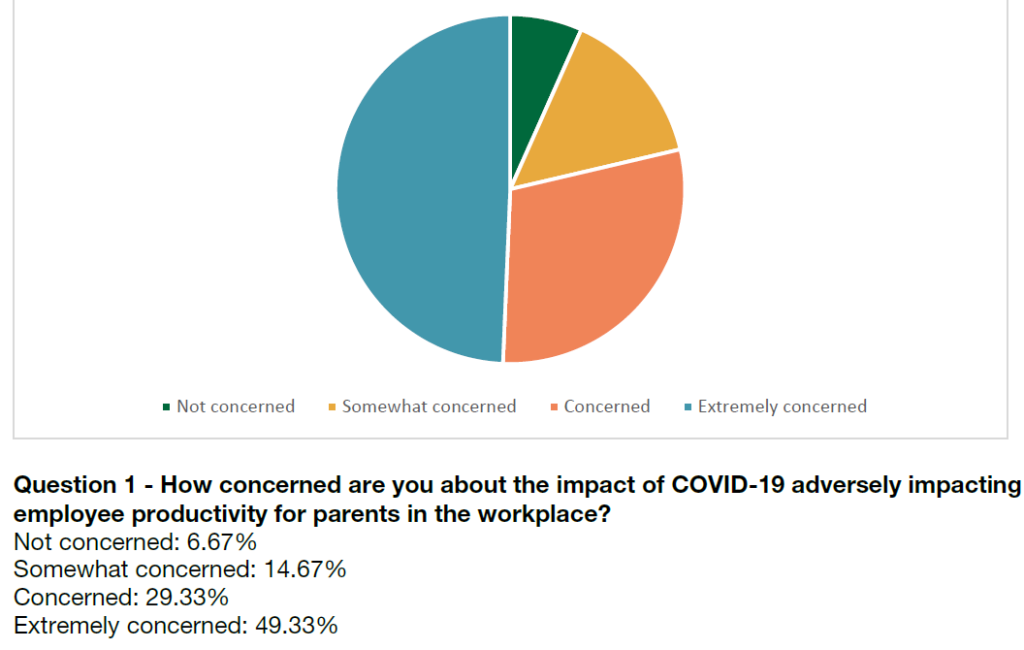Providers, Families, Business Community Agree: Delaware’s Child Care Crisis Imperils More than Just Parents
– Delaware’s child care crisis has far-reaching effects, from the household to the local business community, according to recent survey data.
– Employers cite lack of child care for stalled workforce and recruitment efforts.
– 96 percent of child care centers in Delaware are experiencing a staffing shortage, leaving families to face long waitlists.

For Delaware parents with young kids like Rodel’s own Kim Lopez, the state’s child care crisis is a daily reality.
But today, the crisis has spilled beyond just households with kids and their would-be child care centers.
The ripple effects into businesses, the general workforce, and the overall economy are resonating clearly. Three recent surveys provided insights into how three cross-sections of society are grappling with child care challenges as the pandemic lingers on.
Impact on Delaware Businesses

As evident during the pandemic, the lack of available (or affordable) child care has a massive effect on the economy and workforce participation. A report by ReadyNation found that nationally, lack of child care was the third-most-reported reason for unemployment in December 2020. A year after lockdown the same report found that approximately 15 percent of women ages 25 to 44 were not working due to problems with child care. Employers (around 30 percent) also stated that employees cite child care issues as a reason for employment changes.
Employers in Delaware are sharing their concerns about child care impacting their workforce and recruitment efforts. In an initial survey of Delaware employers, led by the Delaware State Chamber of Commerce and the Federal Reserve Bank of Philadelphia:
- 78 percent are concerned or extremely concerned about the impact of COVID-19 adversely impacting employee productivity for parents in the workplace
- 72 percent have found it difficult, very difficult, or extremely difficult to recruit/retain employees because of the impact COVID-19 has had on child care and school schedules
Their concerns about employees include: high cost of care, availability of care, and lower productivity. Click here to see more results.
“The bulk of our daily absenteeism is for child care,” said one survey respondent. “With schools not fully operational and child care at an all-time low, it is difficult to get child care.”
The DSCC has included child care as essential in its Road to Recovery plan, recognizing the importance of child care for employer recruitment and retention.
[Read: The Economics of Child Care from Delaware Business magazine]Impact on Providers and the Child Care Workforce

Like most industries, the pandemic exasperated the early childhood staffing challenge. A recent national survey on child care programs and the pandemic showed that 96 percent of child care centers in Delaware are experiencing a staffing shortage (with many serving fewer children). Many have had to reduce their operating hours in order to cope with the shortage while others have had to close classrooms. Some providers that have capacity do not necessarily have the ability to enroll up to capacity due to the workforce shortage, leaving families to face indefinite waitlists.
When looking at recruitment challenges, 73 percent of survey respondents identify wages as the biggest factor because potential applicants are recognizing they can make more money working elsewhere. Similarly, 57 percent of respondents said that low wages are the most common reason that educators leave the field.
The crisis in the field has left 46 percent of respondents to consider leaving their program or closing their family child care within the next year.
While Delaware has relied on federal stimulus dollars to support centers and families, these new funds address the new problems brought on by the pandemic meaning, the old problems that plagued the child care industry before, are still very much present and further exasperated by the new challenges of COVID.
Higher costs associated with pandemic safety protocols, decreased enrollment, and lower revenue forced many child care centers nationwide and in Delaware to shut down classrooms or close their doors entirely. These new challenges have built on the financial predicaments early child care centers faced before the pandemic.
Impact on Children and Families
Almost half of all children ages three to four were not enrolled in an educational setting before kindergarten. While the issue is complex, there are two main reasons for the lack of enrollment: supply and affordability of quality child care.
In Delaware, there is an insufficient supply of options by location, age groups served, and hours of service. For example, 47 percent of the state’s birth through age five population live in Sussex and Kent counties. But those counties only contain 38 percent of the state’s early learning programs. Only 77 percent of programs accept infants under one year old, and only three percent of centers offer extended hours.
Child care is also expensive for families across income levels, pandemic or not. In Delaware, child care for one child costs approximately 20 percent of a median family income, or $13,000 per year, per child. Prior to the pandemic, the cost of child care led to half of Delawarean parents/guardians to not grow the economy – meaning they weren’t going back to school, working, having another child, or buying a house.
Higher costs associated with pandemic safety protocols, decreased enrollment, and lower revenue forced many child care centers nationwide and in Delaware to close their doors. While some child care facilities have reopened, many have multiple classrooms still closed.
According to the Delaware Readiness Teams survey from this summer, families continue to struggle finding care. While a majority of respondents indicated that they wanted their children to return to an educational setting, almost 40 percent of survey respondents indicated that their child(ren) was at home with a parent or other caregiver. Before the pandemic, about 40 percent of respondents indicated that they used full-time child care. However, during the crisis, that percentage dropped to 34 percent.
It’s not surprising then that more than half of families (60 percent) remain concerned about balancing family and work demands with caring for their child(ren).
Delawareans are speaking up. Click here to join advocates in urging lawmakers to increase child care investments
Related Topics: child care crisis, delaware early learning, early childhood, early learning, early learning workforce, governor john carney